Items
Item set
Mapping Ann-Marie MacDonald
-
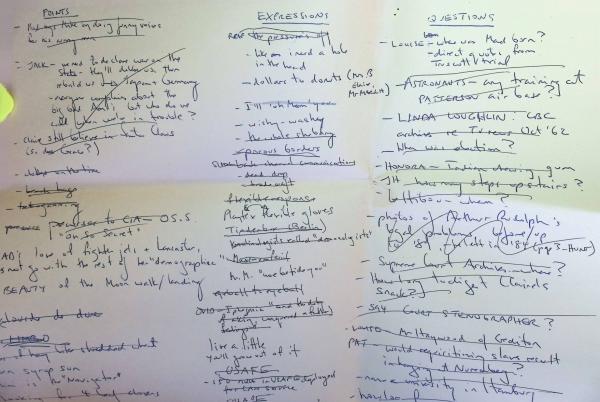
Points, Expressions, and Questions
Transcription of a hand written page containing three lists (Points, Expressions, and Questions). Presumably, Points is possible plot points or details concerning the characters as well as worldbuilding; Expressions is a list of possible expressions, sometimes assigned to specific characters, other times not; and Questions seems to be a mix of questions pertaining to character details and real life information AMM has for presumably historical accuracy and world building purposes. -
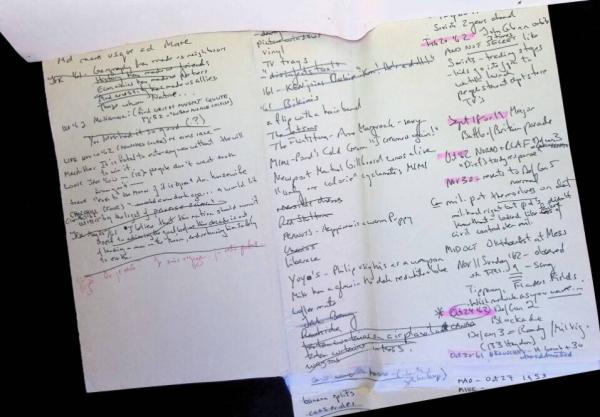
Quotes, Cultural/Texture, Timeline (continued)
A continuation of "Quotes, Cultural/Texture, Timeline" (Omeka ID 17855), which is the first two pages of an extended list. This includes the last two pages (second photo linked) compounded into one longer list, the second page contents starting immediately after the first in their respective lists. -
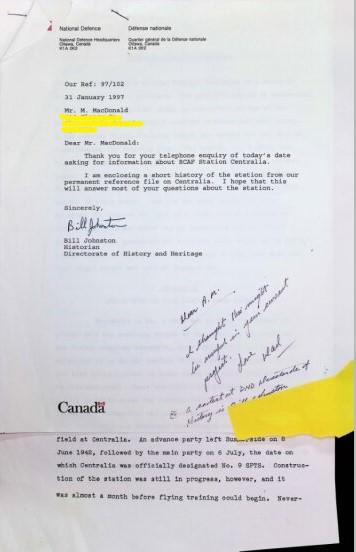
Centralia History from Canada's Directorate of History and Heritage
A letter from Bill Johnston of the Canadian Directorate of History and Heritage, containing with it a short history of RCAF Station Centralia. The letter and accompanying documents were sent to a Mr. M. MacDonald (presumably Ann-Marie MacDonald's father), who then sent them to Ann-Marie. At the top of the letter, it reads, "National Defence Headquarters Ottawa, Canada K1A 0K2", and the French translation beside it, "Quartier general de la Defense nationale Ottawa, Canada K1A 0K2". The letter itself reads, "Our Ref: 97/102 31 January 1997 Mr. M. MacDonald [Redacted Address and Zip Code] Dear Mr. MacDonald: Thank you for your telephone enquiry of today's date asking for information about RCAF Centralia. I am enclosing a short history of the station from our permanent reference file on Centralia. I hope that this will answer most of your questions about the station. Sincerely, [Bill Johnston's signature] Bill Johnston Historian Directorate of History and Heritage" Underneath it is a handwritten note from Mr. M. MacDonald to Ann-Marie, "Dear A.M. I thought this might be useful in your current project. Love Dad. PS A contact at DND Directorate of History is Bill Johnston". The Canada wordmark is in the bottom left corner. An excerpt from the documents can be seen from behind the letter reading, "field at Centralia. An advance party left Summerside on 8 June 1942, followed by the main party on 6 July, the date on which Centralia was officially designated No. 9 SFTS. Construction of the station was still in progress, however, and it was almost a month before flying training could begin. Never-". -

RCAF Station Centralia Aerial Photograph
An aerial photograph of RCAF Station Centralia in black and white. It was a Royal Canadian Air Force training base just outside of Centralia, Ontario, Canada. -
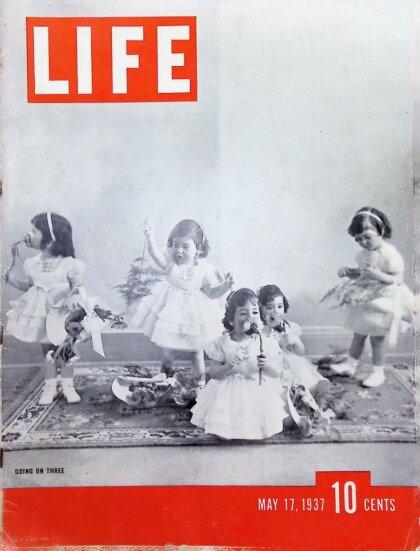
Life Magazine Cover - May 17, 1937
The cover of "Life" magazine from May 17, 1937. The cover features a black and white photograph of the Dionne quintuplets, the first quintuplets known to have survived infancy, holding and smelling flowers / other foliage. They were born in Callander, Ontario on May 28, 1934. Near the bottom left corner, a small piece of text reads, "GOING ON THREE", referring to the fact that the magazine was published shortly before the girls' third birthday. In the bottom right, the magazine is priced at 10 cents. -
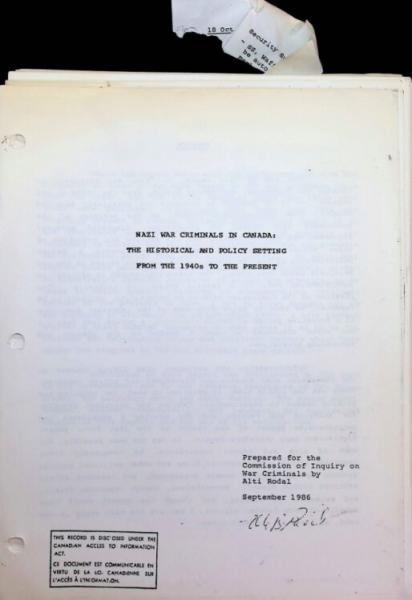
Rodal Report
The front cover of the Rodal Report, formally titled, "Nazi War Criminals in Canada: The Historical and Policy Setting from the 1940s to the Present," written by Alti Rodal. The 618 page long report was prepared for the 1985-1986 Commission of Inquiry on War Criminals in Canada, and was intended to, "[provide] information on the historical policies and circumstances that led to the presence of Nazi war criminals in Canada" (Canada.ca). Its author, Alti Rodal, was the Director of Historical Research for the Commission of Inquiry on War Criminals in Canada, also known as the Deschenes Commission. The title of the document is centered in the top half of the page. Near the bottom right, text reads, "Prepared for the Commission of Inquiry on War Criminals by Alti Rodal September 1986", followed by an illegible signature underneath. In the bottom left, a text box reads, "THIS RECORD IS DISCLOSED UNDER THE CANADIAN ACCESS TO INFORMATION ACT", and its respective French translation, "CE DOCUMENT EST COMMUNICABLE EN VERTU DE LA LOI CANADIENNE SUR L'ACCES A L'INFORMATION." -
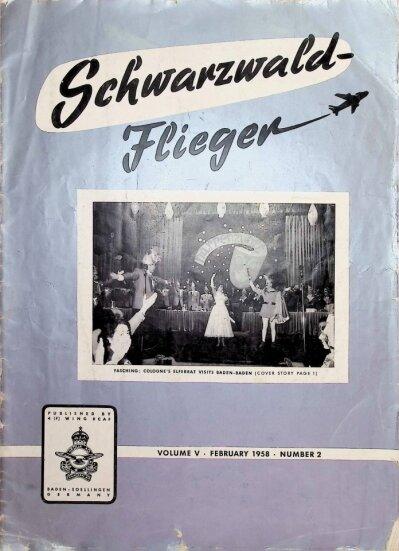
"Schwarzwald-Flieger" February 1958
The cover of "Schwarzwald Flieger" from February 1958, Volume V, Number 2. It pictures the Cologne carnival's council of fools (elferrat) performing in the city of Baden-Baden. Under the image, it reads, "FASCHING: COLOGNE'S ELFERRAT VISITS BADEN-BADEN (COVER STORY PAGE 1)," which roughly translates to, "Carnival: Cologne's council of fools visits Baden-Baden." The bottom left contains the logo for the Royal Canadian Air Force, and has text around it that reads "PUBLISHED BY 4(F) WING RCAF BADEN-SOELLINGEN GERMANY." -
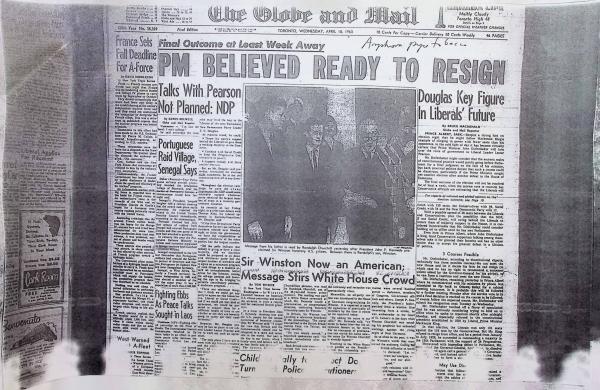
"The Globe and Mail" April 10, 1963, Front Cover
The front page of "The Globe and Mail" newspaper from April 10, 1963. There is handwriting near the top right that reads, "Amphora pipe tobacco." The largest headline on the cover reads, "Final Outcome at Least Week Away, PM BELIEVED READY TO RESIGN." This headline refers to the Canadian Federal election of 1963, during which Lester Pearson's Liberal Party formed a minority government to beat Prime Minister John Diefenbaker's Conservative Party, though it appeared for a time that Diefenbaker might try to cling to his office. One of the first articles, written by Drew Middleton and entitled, "France Sets Fall Deadline for A-Force," details how French sources were reporting that France was on track to produce atomic bombs and Mirage IV planes to carry them by September or October of 1963. These claims were made despite reports that the French were behind schedule, much to the irritation of the French government. The article also reports that France is making good progress towards a hydrogen bomb, with an enriched-uranium plant being planned at Pierrelatte to supply the bombs. Another article, written by Seymour Topping and entitled, "West Warned About A-Fleet," details how the Soviet Union warned against Western powers creating a European nuclear force, stating that it would impede disarmament negotiations and imperil world peace. They also implied, through a note sent to the United States during a NATO meeting, that they might provide their allies with nuclear weapons if a NATO nuclear force came into being. In an article by Tom Wicker entitled, "Sir Winston Now an American; Message Stirs White House Crowd," Wicker writes about how President John F. Kennedy proclaimed Sir Winston Churchill an honorary U.S. citizen, and how Churchill gratefully accepted the honor. An image accompanies this story, showing, from right to left, Randolph Churchill (Sir Winston's son), Winston Churchill (Randolph's son), and John F. Kennedy. Other articles from this page include, "Talks With Pearson Not Planned: NDP," "Douglas Key Figure In Liberals' Future," "Portuguese Raid Village, Senegal Says," "Fighting Ebbs As Peace Talks Sought in Laos," "Children Rally to Protect Dog, Turn Back Police Executioners," and, "Open Sunnyside Pool For Another Season." -
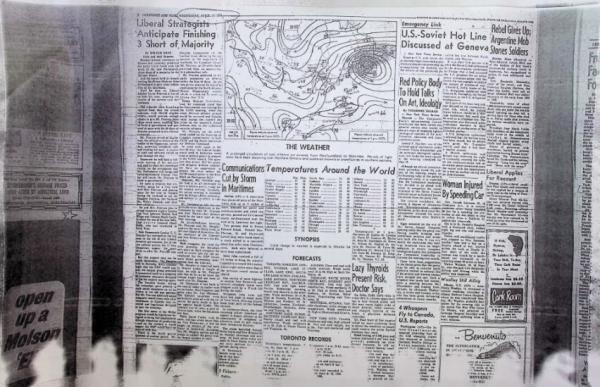
"The Globe and Mail" April 10, 1963, Page 2
A page from "The Globe and Mail" from April 10, 1963. The first article, written by Walter Gray and entitled, "Liberal Strategists Anticipate Finishing 3 Short of Majority," details how Lester Pearson's Liberal Party was projected to fall three seats short of a majority government in the House of Commons with 130 seats. The article then goes on to explain the likely coalition that would occur between the Liberals and T. C. Douglas' New Democratic Party, who held seventeen seats and pledged to support the party who won the most seats (provided said party commits themselves to a program of economic measure to "get the country moving again"). In addition to this, the article reports on Pearson's plan to put together an all party defense committee to formulate a defense policy, particularly regarding the issue of whether or not Canada should acquire nuclear weapons. Another article, from the New York Times Service and entitled, "U.S.-Soviet Hot Line Discussed at Geneva," describes how U.S. and Soviet negotiators had a preliminary discussion on a planned hotline between Washington D.C. and Moscow to reduce the risk of accidental war. The two main delegates were Charles C. Stelle of the U.S. and Semyon K. Tsarapkin of the Soviets. The last major article, written by Theodore Shabad and entitled, "Red Policy Body To Hold Talks On Art, Ideology," details how the Communist Party’s policy-making Central Committee would hold a general session on May 28, 1963, to, "discuss ways of imposing tighter ideological controls in the arts, literature, education and mass communications." This session was called in response to nonconformist painters and sculptors refusing to fall in line with the Communist Party's ideology, and how the repercussive measures the party was taking were not adequate in ensuring "complete ideological loyalty." The article ends with acknowledging suggestions that the Communist Party may be seeking to exercise better cultural control by merging the artistic and literary unions into one, with such a suggestion being made by prominent writer and literary critic Aleksander Chakovsky. Other articles on this page include, "Communications Cut by Storm In Maritimes," "Lazy Thyroids Present Risk, Doctor Says," "4 Whoopers Fly to Canada, U.S. Reports," "Woman Injured By Speeding Car," "Woolley Still Ailing," "Rebel Gives Up; Argentine Mob Stones Soldiers," and, "Liberal Applies For Recount." -
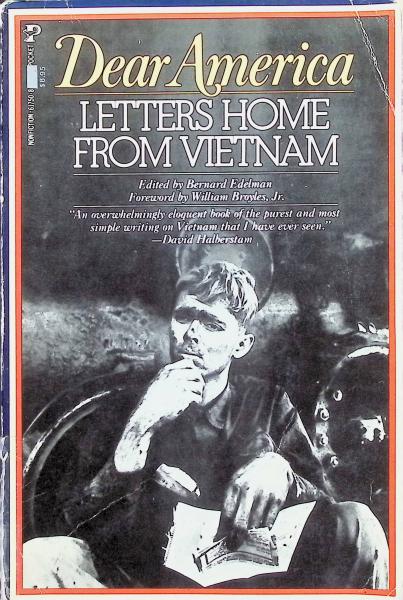
"Dear America: Letters Home From Vietnam"
This is an image of the front cover of "Dear America: Letters Home From Vietnam". Nearly forty years after the official end of the Vietnam War, Dear America allows us to witness the war firsthand through the eyes of the men and women who served in Vietnam. In this collection of more than 200 letters, they share their first impressions of the rigors of life in the bush, their longing for home and family, their emotions over the conduct of the war, and their ache at the loss of a friend in battle. Poignant in their rare honesty, the letters from Vietnam are "riveting,... extraordinary by [their] very ordinariness... for the most part, neither deep nor philosophical, only very, very human" (Los Angeles Times). Revealing the complex emotions and daily realities of fighting in the war, these close accounts offer a powerful, uniquely personal portrait of the many faces of Vietnam's veterans. Additional Cover Text: "'An overwhelmingly eloquent book of the purest and most simple writing on Vietnam that I have ever seen.' - David Halberstam" This specific copy looks to be the mass market paperback. -
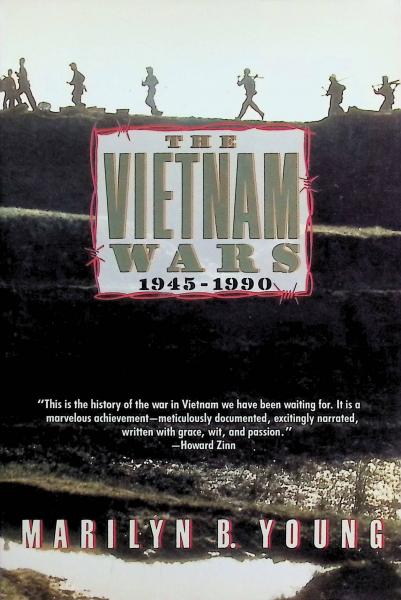
"The Vietnam Wars 1945-1990"
This is an image of the front cover of "The Vietnam Wars 1945-1990". In this remarkably researched account of the American and Vietnamese political and diplomatic sides of the Vietnam War, Marilyn Young offers some correctives to pervasive myths that surround the conflicts leading up to the first clashes, pertaining to popular terms found in American rhetoric when discussing "the enemy," and the impact of American interference in foreign affairs. Additional Text on Cover: "'This is the history of the war in Vietnam we have been waiting for. It is a marvelous achievement — meticulously documented, excitingly narrated, written with grace, wit, and passion.' - Howard Zinn" Physical Description: 448 pages, 13.49 x 2.57 x 20.32 cm -
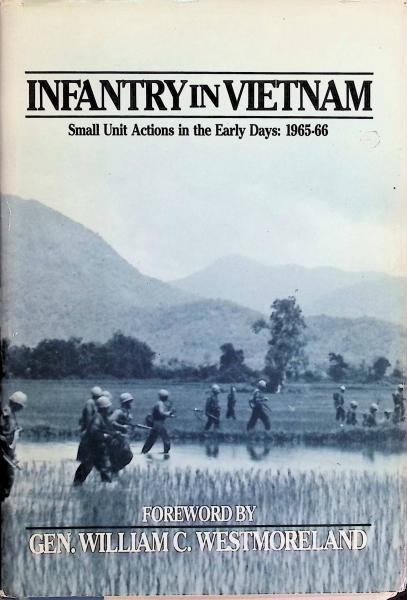
"Infantry in Vietnam:. Small Unit Actions in the Early Days: 1965-66"
This is an image of the cover of "Infantry in Vietnam", which chronicles the American infantryman's adaption to fighting a fanatical and skilled enemy in the extreme environments of mangrove swamps, bamboo thickets, dense jungles and mountainous terrain. Written by the officers in command of the companies and platoons involved, Infantry in Vietnam analyzes combat actions occurring in 1965-66. Small unit activities covered are patrolling, ambushes, attack and defensive tactics, intelligence, fire support and special operations. Physical Description: 298 pages, 8.5 x 5.7 x 1 inches -
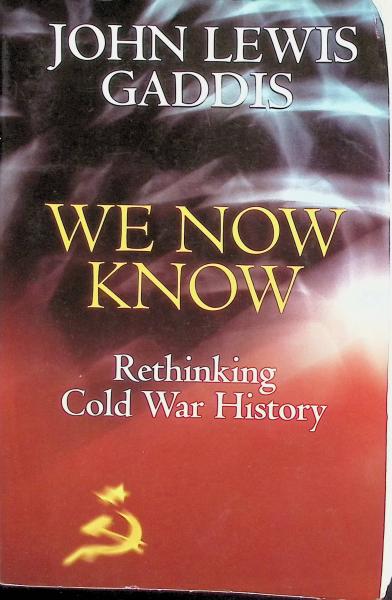
"We Now Know: Rethinking Cold War History"
This is an image of the cover of John Lewis Gaddis's book, to which the plot summary is as follows: Did the Soviet Union want world revolution? Why did the USSR send missiles to Cuba? What made the Cold War last as long as it did? The end of the Cold War makes it possible, for the first time, to begin writing its history from a truly international perspective. Based on the latest findings of Cold War historians and extensive research in American archives as well as the recently opened archives in Eastern Europe, the former Soviet Union, and China, We Now Know provides a vividly written, eye-opening account of the Cold War during the years from the end of World War II to its most dangerous moment, the Cuban missile crisis. -
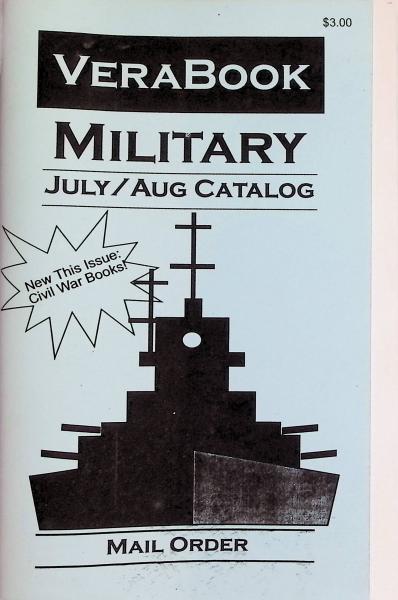
"Military" Mail Order Catalog
This is an image of a July / August mail order catalog from VeraBook, titled "Military". Additional text: "New This Issue: Civil War Books!" -
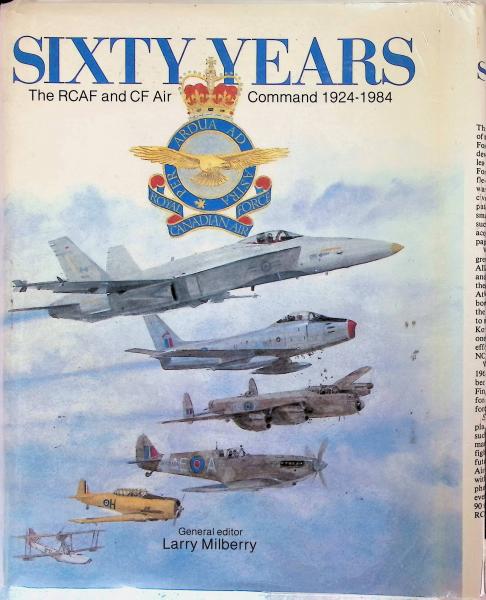
"Sixty Years: The RCAF and CF Air Command 1924-1984"
This is an image of the first book to tell in detail the story of the Royal Canadian Air Force and Canadian Forces Air Command. It begins with early developments in Canadian military aviation leading to the formation of the Canadian Air Force in 1918 and the RCAF in 1924. Sixty Years is the story of the people and planes from the early Avro 504 and Vedette to such recent acquisitions as the Aurora maritime patrol aircraft and the CF-18 fighter. The book ends with a look into the future by LGen Paul Manson, Commander of Air Command. It is handsomely illustrated with the finest and largest collection of over 90 specially commissioned colour profiles of RCAF/CF aircraft. Physical Description: 480 pages, 8.5x11-in., including some 800 photos and a gallery of 95 beautiful paintings by Canada’s top aviation artists. -
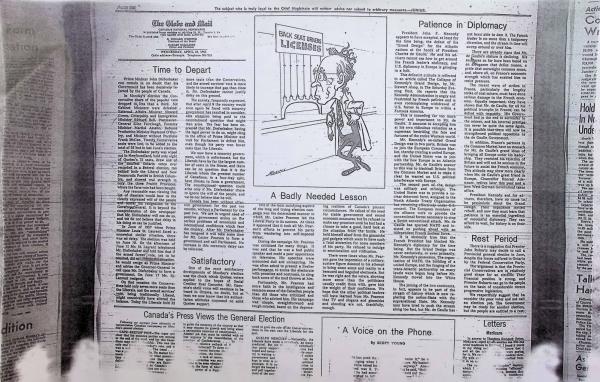
"The Globe and Mail" April 10, 1963
Multiple articles from "The Globe and Mail" newspaper from April 10, 1963. The first article provides details on the Canadian Federal Election of 1963, particularly how Prime Minister John Diefenbaker dragged out the electoral process in his not resigning office despite the Liberal Party winning the most seats and a minority government. The article then goes on to praise his opponent, Prime Minister Lester Pearson, and his "simple, straightforward and tough-minded" campaign, where, "He talked of the need for stable government and sound economic measures, but he refused to make any promises until he had had a chance to take a good, hard look at the situation from the inside." Another article then goes on to detail President John F. Kennedy's struggle to enact his "Grand Design" with the Atlantic Nations, primarily due to the obstinacy of President Charles de Gaulle of France. The page also contains a cartoon of a man waiting at a desk to get his "Back Seat Drivers License." -
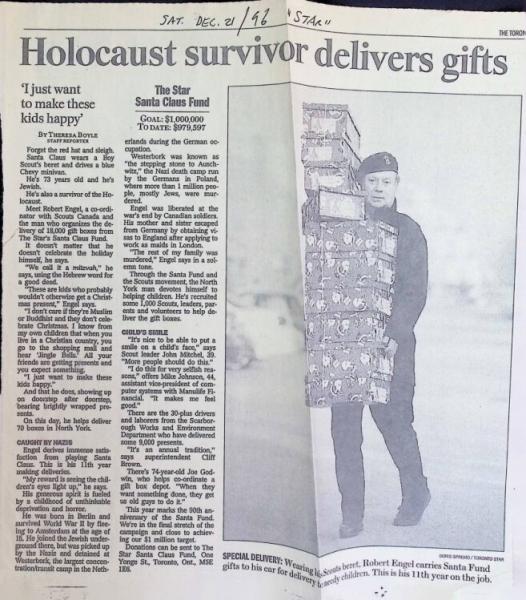
"Toronto Star" Holocaust Survivor Robert Engel Delivers Gifts
An article from the Toronto Star newspaper from December 21, 1996. The article details how 71 year-old Robert Engel, a holocaust survivor, coordinated with Scouts Canada to organize the delivery of 18,000 presents from The Star's Santa Claus Fund. The article was written during his eleventh year of making the gift deliveries. The article describes Engel's story as follows: "He was born in Berlin and survived World War II by fleeing to Amsterdam at the age of 15. He joined the Jewish under-ground there, but was picked up by the Nazis and detained at Westerbork, the largest concentration/transit camp in the Netherlands during the German occupation... Engel was liberated at the war's end by Canadian soldiers. His mother and sister escaped from Germany by obtaining visas to England after applying to work as maids in London. "The rest of my family was murdered," Engel says in a solemn tone." The photograph included with the article shows Engels in a coat and Boy Scout's beret carrying what appears to be 10 gift boxes stacked on top of one another. -
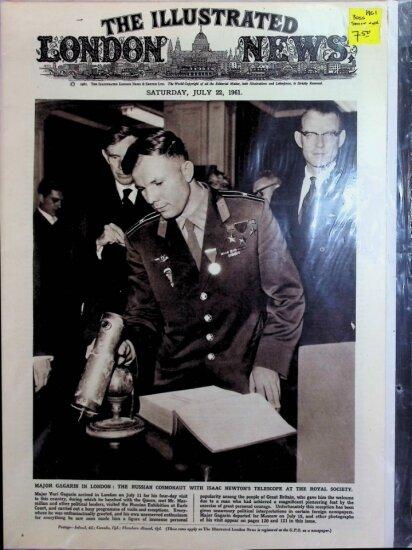
"The Illustrated London News" Major Yuri Gagarin
The front cover of "The Illustrated London News" from July 22, 1961. The cover depicts a large photograph of Major Yuri Gagarin, a Russian cosmonaut, in London with Isaac Newton's telescope at the Royal Society. Yuri Gagarin was the first man in outer-space, and thus the article describes his four day visit in London as being met with much enthusiasm. It is said that he arrived on July 11th, 1961, and left July 15th for Moscow. His activities in Great Britain include having lunch with Queen Elizabeth II, meeting Prime Minister Harold Macmillan, visiting the Russian Exhibition at Earls Court, and carrying out a busy program of visits and receptions. The article also states that the visit was given unsavory political interpretations in certain foreign newspapers. -
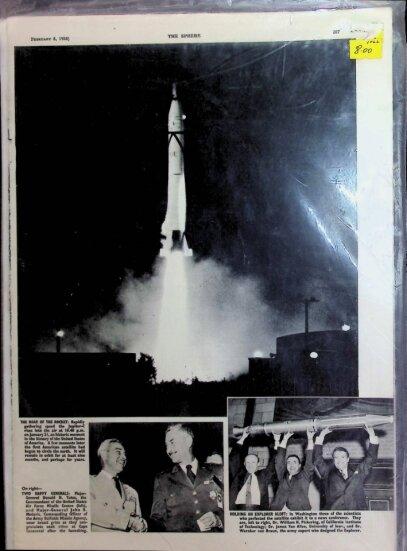
"The Sphere" Jupiter-C Launch
A page from "The Sphere" newspaper from February 8, 1958. It depicts three photographs. The first is of the launch of Jupiter-C (also known as Juno I), an American sounding rocket which successfully launched the first American Earth satellite, Explorer I, on January 31, 1958, at 10:48 p.m. The second photograph shows Major-General Donald N. Yates, the Commandant of the United States Air Force Missile Center, and Major-General John B. Medaris, Commanding Officer of the Army Ballistic Missile Agency, shaking hands after the launch of Jupiter-C at Cape Canaveral. The third photograph shows Dr. William H. Pickering, Dr. James Van Allen, and Dr. Wernher von Braun holding the Explorer I satellite above their heads, the satellite which they each helped to perfect. -
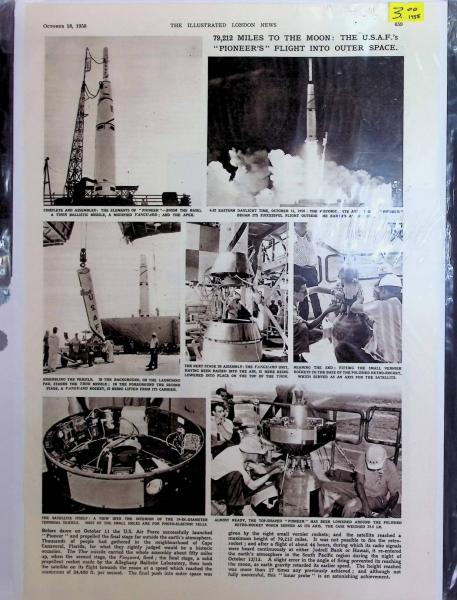
The Illustrated London News Pioneer Launch
A page from The Illustrated London News from October 18, 1958. It contains images and descriptions of the assembly and launch of the American space probe, Pioneer. The satellite reached the height of 79,212 miles in the air, but was unable to make it to the Moon. -

Betty Sturmer's DJ Everybody
An advertisement for a DJ Everybody event happening on the 5th of June, 1997. The front of the advertisement depicts a woman in a blue dress seated on the floor with a glass in her hand, placing her hands on two vinyl records. The back of the advertisement reads as follows: "Das Original DJ EVERYBODY happening Bring all you records! cassetten und cd's. microfon also da! new slide everybody. Bring all your! (Dias) 5. Juni 1997, Eintritt: 8 DM ab 22 h Achtung: Rosenbowlebarservice Wer Platten mitbringt und auflegt zablt keinen Eintritt! roter salon/volksbuhne am rosa luxemburg platz. sponsored by MOBILE METALLICO". This roughly translates to: "The original DJ EVERYBODY happening. Bring all your records! Cassettes and CDs. Microphone there! Bring all your! (Slides?) June 5, 1997, Entry: 8 Deutsche Marks. From 10 p.m. Attention: Rosenbowle bar service. If you bring records and play, you don't have to pay entry! Red Salon/Volksbuhne at Rosa Luxemburg Place. Sponsored by MOBILE METALLICO". DJ Everybody is advertised as being a participatory DJ performance, and is described by Betty Sturmer's website as follows: "DJ Everybody is a hybrid between music and art and gives everybody the opportunity to play her or his set; a kaleidoscope of music, styles and statements on the mike. The border between audience and performer is broken down. DJ Everybody is an interactive happening, a dialogical network, that turns every receiver into a sender and vice versa." -
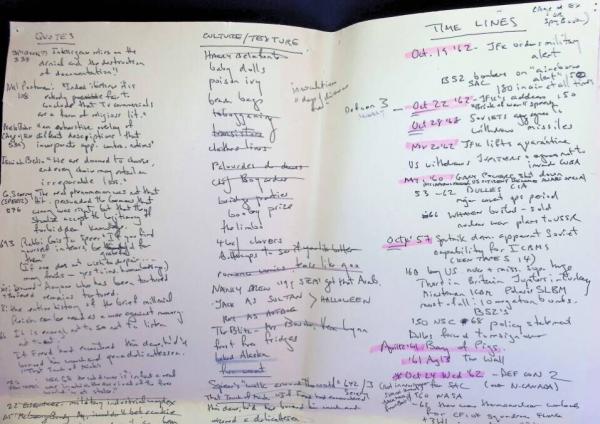
Quotes, Culture/Texture, Time Lines
Written by AMM, two photos make up one large page. quotes are from outside sources such as the "SpyBook" and the Kennedy Tapes (found in this item set), as well as a movie called "That Touch of Mink". The "Culture/Texture" seems to be cultural iconography from the period, and "Time Lines" largely covers the Cuban Missile Crisis, with some general cold war dates as well. -
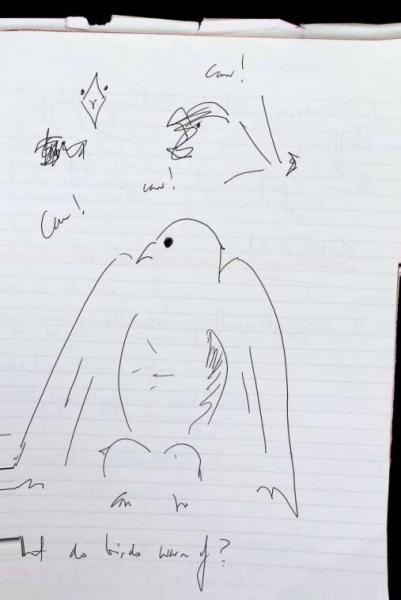
Bird Drawing
AMM hand drawn bird, includes side and front view of a crow's (presumably) open mouth. -
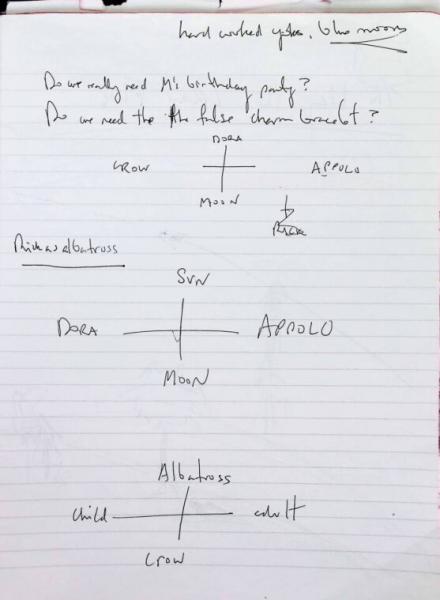
Note: character t charts
placeholder. context needed -

How Britain's Economic, Political, and Military Weakness Forced Canada into the Arms of the United States: The 1988 Joanne Goodman Lectures
"As Canadians continue to argue with each other about the benefits of a cosier relationship with out American cousins, Granatstein provides a salutary reminder that the historical roots of the debate stretch not only across the forty-ninth parallel but back across the Atlantic too."-De Gruyter